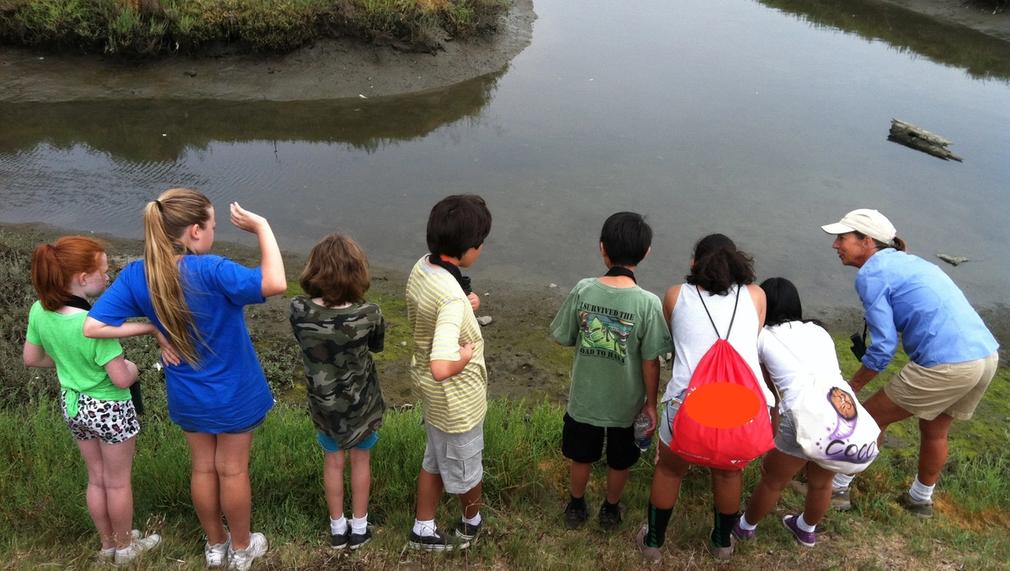Wild Spaces in the Ballona Creek Watershed
Nature Nexus Institute strives to provide equitable access to green spaces through community nature walks, nature discovery trips for schools, and environmental events. Connecting communities to Wild Spaces in the Ballona Creek Watershed provides Angelenos with a unique and informative nature experience to learn about their watershed. Water flows above and below the earth's surface in all watersheds. Participants will learn how unseen groundwater can sustain entire ecosystems.

What is the primary issue area that your application will impact?
Green Space, Park Access, and Trees
In which areas of Los Angeles will you be directly working?
County of Los Angeles
City of Los Angeles
LAUSD
In what stage of innovation is this project, program, or initiative?
Expand existing project, program, or initiative
What is your understanding of the issue that you are seeking to address?
The project aims to address equitable access to green space in Los Angeles, knowledge-share/stewardship of the function of wetlands, and their impact on climate resiliency. We recognize that community resilience is rooted in a context of social and environmental justice. Getting people to act is a complex process extending well beyond just providing people with the facts and expecting them to subsequently make environmentally friendly choices. This project aims to provide underserved communities with access to and knowledge of nature in their city and actions they can take to protect and preserve a healthy environment. The more the community knows about nature in their city, the more reasons they will have to be good stewards of the land.
Describe the project, program, or initiative this grant will support to address the issue.
Ballona Creek flows above and below ground through our city. It reaches the ocean adjacent to the Ballona Wetlands, a 570-acre gem with limited public access. The project will provide public tours at the Wetlands and the Westwood Greenway, both located within the 140 square mile Ballona Watershed. The Greenway features a portion of the formerly buried Brown Canyon Creek, which is now daylighted and surrounded by native plants as it flows along the Metro E line tracks. Ballona is the only natural wetland found within the city limits. Community tours are preceded by informative workshops about the natural history of Los Angeles. Workshops will be conducted at libraries local to underserved communities that otherwise might not have the opportunity to access these locations. The Greenway is accessible via public transportation, while a bus trip to Ballona Wetlands would be provided as part of the workshop series at the libraries. Also, members of the public are invited to twice-monthly Ballona Wetlands walks and monthly habitat restoration events. In addition, school field trips and pre-trip presentations will connect thousands of children in grades 3, 4, 5, 6 (many from LAUSD Title 1 schools) to the Watershed. Staff and docents lead students through the wetland's four learning stations. Each student is issued a pair of binoculars to use while at the wetlands. Recruitment of participants will be through our library, community partners, and long-established school connections.
Describe how Los Angeles County will be different if your work is successful.
The Project activities aim to deepen participants' sense of place and belonging in the great outdoors. We believe that when people connect to nature in our city, they then seek ways to care for it. The very existence of these two sites is the result of community advocacy. Ballona Wetlands location had been under threat of real estate development. The public organized and fought for thirty years to save this rare coastal wetland. The Ballona Wetlands Ecological Reserve was established in 1995, and its 570 acres of biodiverse wetland habitat will remain as a home for wildlife and a nature resource for people in perpetuity. The Westwood Greenway was made possible through community efforts that turned a potential parking lot into a beautiful park, daylighting a long-buried creek along the Expo Line tracks. We hope to create a more diverse and inclusive voice in the environmental movement through stewardship training within this project, which includes monthly habitat restoration events.
What evidence do you have that this project, program, or initiative is or will be successful, and how will you define and measure success?
This project expands upon Nature Nexus Institute's outdoor learning programs for elementary and middle schools, high school/college internship/leadership programs, and community stewardship programs. Our programs' success is measured by the number of participants, and by students who may be inspired to pursue environmental science and education careers. We've had program alumni earn positions with Friends of the LA River, Natural History Museum, California State Parks, Environment for the Americas, and others who have worked to improve the environmental health of their local neighborhoods. We will measure success by the number of students and community members we engage, and the number of activities we can offer, aimed at sparking joy in nature and nature stewardship.
Approximately how many people will be impacted by this project, program, or initiative?
Direct Impact: 3,000
Indirect Impact: 10,000
Describe the role of collaborating organizations on this project.
Westwood Greenway - will provide access for NNI staff to lead a tour at the site. Los Angeles Public Library branches, including Baldwin Hills & Jefferson branches- where NNI will host workshops and community nature events building upon its long-term partnership with libraries. Ballona Wetlands Ecological Reserve - NNI has an agreement in partnership with Los Angeles Audubon Society to operate education programs at this site.